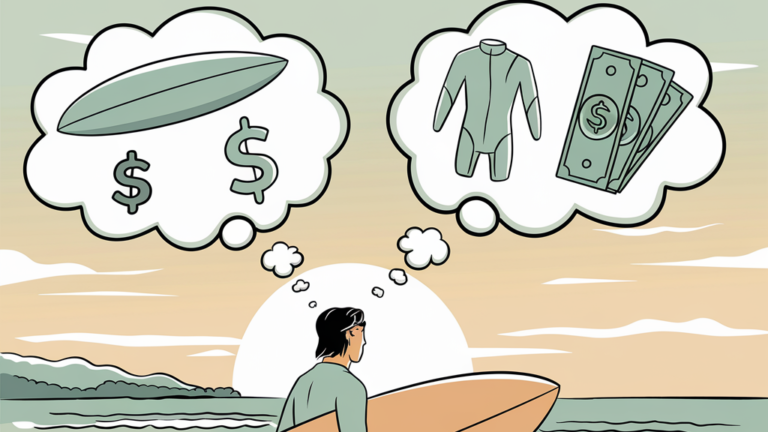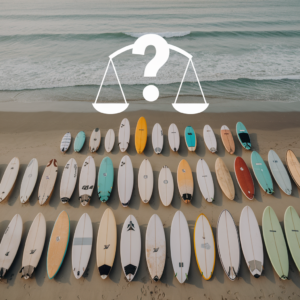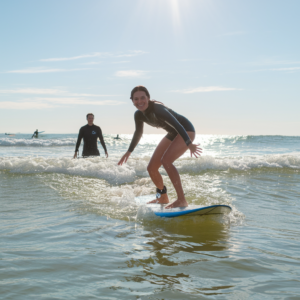Have you ever dreamt of riding the waves, only to be deterred by the supposed high costs associated with surfing? Many budding surfers share this concern, wondering if they need to empty their wallets to embrace the surf lifestyle. But is surfing really as expensive as it seems, or are there savvy strategies that can help you catch waves without breaking the bank? In this guide, we’ll explore the various costs involved in surfing and reveal insider tips on how to save money without compromising on the thrill of the ride. From finding budget-friendly gear to taking advantage of off-peak seasons, we’ve got you covered with cost-saving secrets that will make your surfing journey both exciting and economical. So, grab your board and let’s dive into the world of surfing without the hefty price tag!
What’s the Real Cost of Surfing? A Comprehensive Overview
So, you’ve caught the surfing bug and you’re wondering, “What’s this going to set me back?” Let’s break down the costs and discover how to make surfing an affordable adventure.
The Essential Gear
First things first: gear. You can’t hit the surf without the right equipment, but you don’t need to splurge on top-of-the-line gear right out of the gate. Here’s a rundown of what you’ll need:
- Surfboard: The quintessential piece of surfing equipment. Beginners often start with a longboard, which provides stability. You can find quality used boards for a fraction of the price of new ones.
- Wetsuit: Depending on the water temperature, a good wetsuit is essential. Thrift shops and online marketplaces can be gold mines for lightly used suits.
- Leash: This little strap keeps your board close if you wipe out. It’s a small investment but crucial for safety.
- Wax: Surfboard wax helps you maintain grip. It’s cheap and necessary.
When starting out, consider buying second-hand gear. Check out local surf shops, online classifieds, and surf community forums. You’ll often find seasoned surfers selling their pre-loved boards and wetsuits at reasonable prices.
Lessons and Surf Schools
You might think you can just grab a board and paddle out, but some initial guidance can make a huge difference. Surf lessons range in price but look for group sessions or community classes, which are often more affordable. Plus, many surf schools offer package deals that bundle multiple lessons at a discounted rate. Don’t forget to check for seasonal discounts, especially during the off-peak months.

Travel and Surf Spots
Surfing can be as local or as exotic as you want it to be. If you’re fortunate to live near a beach, your travel costs might be minimal. However, if you’re eyeing a surf trip to renowned breaks like Bali or Hawaii, you’ll need to factor in travel and accommodation expenses.
Pro tip: Consider nearby surf spots that may be less famous but offer great waves and lower costs. Research regional surf destinations that you can drive to, saving on flights and accommodations.
Maintenance and Upkeep
Don’t overlook the cost of maintaining your gear. Regularly check your board for dings and cracks, and get them repaired promptly to avoid more significant damage. Keeping your wetsuit clean and stored correctly will extend its life, saving you money in the long run.
Community and Resources
Lastly, tap into the surfing community. Join local surf clubs or online forums where surfers share tips, swap gear, and even organize group trips. These communities can be invaluable for finding deals and learning from experienced surfers.
Key Takeaways:
- Opt for second-hand gear to save on initial costs.
- Take advantage of group lessons and community classes.
- Explore local and regional surf spots to minimize travel expenses.
- Maintain your equipment to extend its lifespan.
- Engage with the surfing community for resources and support.
Where to Buy Surfing Gear Without Breaking the Bank
Finding the right surfing gear at the right price can feel like hunting for treasure. Luckily, you don’t need to spend a fortune to gear up. Whether you’re scouring online marketplaces or visiting local surf shops, there are plenty of options to suit any budget. Let’s dive into where to buy your surfing essentials and compare some of the best options.
Online Marketplaces vs. Local Surf Shops
Both online marketplaces and local surf shops have their own perks and pitfalls. Here’s a comparison to help you decide where to start your search:
| Aspect | Online Marketplaces | Local Surf Shops |
| Selection | Wide variety, including new and used gear | Curated selection, often tailored to local needs |
| Price Range | Often lower prices, with many budget options | Generally higher, but with seasonal discounts |
| Shipping/Convenience | Convenient, with direct delivery | Immediate purchase, no waiting for delivery |
| Quality Assurance | Risk of varying quality, check reviews | Typically higher quality, with staff recommendations |
| Community Support | Limited, mainly transactional | High, support local businesses and get advice |
| Return Policy | Varies by seller, check before buying | Usually clear and straightforward |
Online Marketplaces
- Craigslist and Facebook Marketplace: These platforms are excellent for finding used surfboards and wetsuits at bargain prices. Sellers are often local, so you can inspect the gear before committing to a purchase.
- eBay: eBay is another fantastic place to find both new and used surf gear.
- Dedicated Surf Websites: Websites like Surf Station and Cleanline Surf offer a mix of new and used equipment. They often have clearance sections where you can snag high-quality gear at a discount.
- Amazon: For brand new gear, Amazon provides a vast selection with customer reviews to guide your choice. Look out for deals and discounts, especially during sales events like Prime Day.
Local Surf Shops
- Expert Advice: Staff members are usually experienced surfers who can guide you in choosing the right board and wetsuit.
- Quality Assurance: When you buy from a local shop, you can be confident in the quality of the gear. You can see, touch, and even try on the equipment before purchasing, which isn’t possible with online shopping.
- Community Engagement: Supporting local surf shops helps sustain the local surfing community. Many shops host events, lessons, and surf club meetings, providing opportunities to connect with fellow surfers.

Tips for Scoring the Best Deals
- Seasonal Sales: Surf shops often discount their gear to make way for new inventory. This is an excellent time to snag a deal on high-quality equipment.
- Package Deals: Some surf shops and websites offer package deals that include a board, leash, and wetsuit at a reduced price. These can be great value for beginners needing all the essentials.
- Surf Swap Meets: Check for local surf swap meets where surfers buy, sell, and trade gear. These events are perfect for finding good deals and connecting with the surfing community.
- Demo Days: Attend demo days hosted by surf shops or surfboard manufacturers. These events allow you to try out different boards before buying and often include special discounts on demo models.
Key Takeaways:
- Online Marketplaces offer convenience and variety, often at lower prices.
- Local Surf Shops provide expert advice, quality assurance, and community support.
- Seasonal Sales, Package Deals, Surf Swap Meets, and Demo Days are excellent for finding bargains.
Saving on Surfing: Tips and Tricks to Keep Costs Down
So, you’ve got your gear and know where to shop. The key to a budget-friendly surfing experience lies in smart strategies and making the most of what’s available to you.
- Choose the Right Surfboard
Investing in a versatile surfboard can save you money in the long run. For beginners, a soft-top longboard offers stability and ease of use without breaking the bank. If you’re looking to advance your skills, consider a mid-length board that’s suitable for a range of conditions. Opt for boards that come with a few extra features like fins and a leash included, which can reduce additional costs.
- Embrace Off-Peak Surfing
Timing is everything. Surfing during off-peak seasons can lead to significant savings. Beaches are less crowded, and some surf schools and rental shops offer discounts during quieter months. Plus, you’ll avoid the surge in prices typically associated with peak surfing seasons and holiday periods.
- DIY Maintenance
Instead of paying for professional repairs, learn basic surfboard maintenance skills. Simple fixes like sealing minor dings or replacing fins can be done at home with a few tools and supplies. There are plenty of tutorials available online to guide you through these DIY repairs.
- Join a Surf Community
Being part of a surf community can provide numerous cost-saving benefits. Many local surf clubs offer group discounts on lessons and gear. Additionally, you might gain access to shared equipment, like boards and wetsuits, and have opportunities to participate in organized surf events that can be more affordable than individual experiences.
- Look for Gear Rentals
If you’re not ready to commit to purchasing all your gear, renting can be a cost-effective option. Many surf shops and beaches offer rental services for boards, wetsuits, and other equipment. This is especially useful for travelers or occasional surfers who don’t need to own gear year-round.
- Take Advantage of Free Resources
There are many free resources available to enhance your surfing experience without costing a dime. Look for online tutorials, forums, and local surf meetups where you can learn from experienced surfers. Many beaches also have free or low-cost surf competitions and community events that can provide additional insight and networking opportunities.
Frequently Asked Questions About Surfing Costs
Is surfing an expensive sport?
Surfing can be as affordable or as costly as you make it. The initial investment in equipment, such as a surfboard and wetsuit, can be significant, but there are ways to keep costs down. Buying used gear, opting for rentals, and taking advantage of off-peak discounts can all help make surfing more budget-friendly. Overall, while some aspects of surfing can be pricey, smart shopping and planning can make it accessible without draining your wallet.
What is the average cost of a surfboard?
The cost of a surfboard varies widely depending on the type, brand, and condition. For beginners, a new soft-top board can cost between $300 and $500. High-performance shortboards or custom boards can range from $600 to $1,200 or more. If you’re looking for savings, consider purchasing a used surfboard, which can cost significantly less, often between $150 and $300.
How much should I expect to pay for a wetsuit?
Wetsuit prices vary based on the thickness, brand, and material. A good-quality wetsuit for cooler waters typically ranges from $200 to $400. For warmer conditions, you might find lighter suits for $100 to $250. As with surfboards, buying second-hand or shopping during sales can help reduce costs.
Are surf lessons worth the cost?
Surf lessons can be a valuable investment for beginners, as they provide essential instruction on techniques and safety. Prices for group lessons generally range from $50 to $100 per session, while private lessons can cost between $100 and $200. Many surf schools offer package deals that can lower the cost per lesson. For those serious about learning, investing in a few lessons can accelerate progress and enhance your overall surfing experience.
How can I find affordable surf gear?
There are several strategies to find budget-friendly surf gear:
- Shop second-hand: Websites like Craigslist, Facebook Marketplace, and local surf shops often have used gear at lower prices.
- Check for sales and discounts: Many surf retailers offer seasonal sales and clearance events where you can find high-quality gear at reduced prices.
- Look for package deals: Some shops and online stores offer bundled deals on surfboards, wetsuits, and accessories.
- Visit surf swap meets: These events allow surfers to buy, sell, and trade gear, often at bargain prices.
Can I rent surf equipment instead of buying it?
Yes, renting surf equipment is a practical option, especially for beginners or travelers. Many surf shops and rental services offer affordable rates for boards, wetsuits, and accessories. It’s also a good option for those who surf occasionally and don’t need to own equipment year-round.
Are there any hidden costs associated with surfing?
Beyond the initial cost of gear and lessons, some additional expenses might include:
- Travel costs: If you’re traveling to surf spots, consider expenses for transportation, accommodation, and meals.
- Gear maintenance: Regular upkeep and occasional repairs for your surfboard and wetsuit can add to the overall cost.
- Surfing permits: Some locations may require permits or fees for accessing certain surf spots.
How can I save on travel expenses for surf trips?
To keep travel costs down, consider these tips:
- Travel off-peak: Plan your trips during shoulder seasons to benefit from lower prices and fewer crowds.
- Book in advance: Secure flights and accommodations early to take advantage of lower rates.
- Consider budget accommodations: Look for hostels, guesthouses, or vacation rentals instead of expensive hotels.
- Travel with others: Sharing costs for transportation and lodging can significantly reduce expenses.
Enjoy The Stoke Without the Costly Price Tag
Surfing embodies the freedom of riding ocean waves, the thrill of adventure, and a connection with nature. While it’s true that getting started in surfing can involve some expenses, it’s entirely possible to enjoy this exhilarating sport without overspending. By understanding the various costs and employing smart strategies, you can keep your surfing experience both enjoyable and budget-friendly.
From choosing the right surfboard and wetsuit to exploring second-hand options and making the most of rental services, there are numerous ways to minimize costs. Embracing off-peak surfing times and engaging with the local surf community can further enhance your savings while enriching your surfing journey.
So, grab your board, hit the waves, and enjoy the ride—because surfing is not just for the elite; it’s for anyone who seeks the thrill of the ocean, no matter their budget. Happy surfing!



